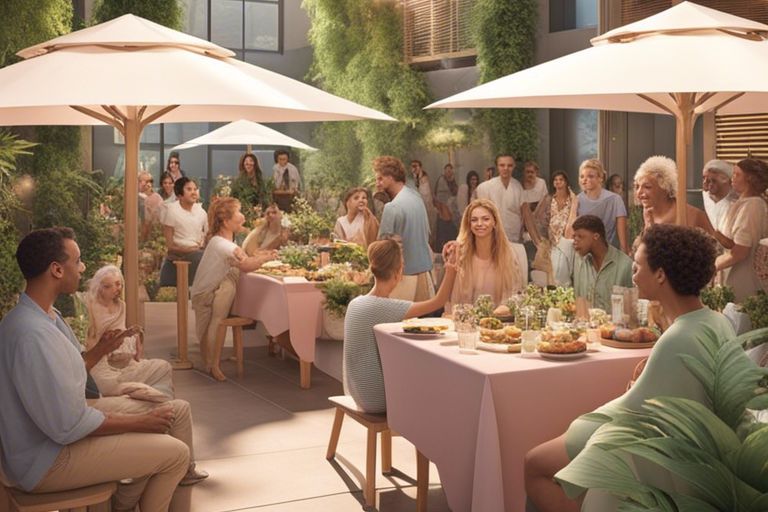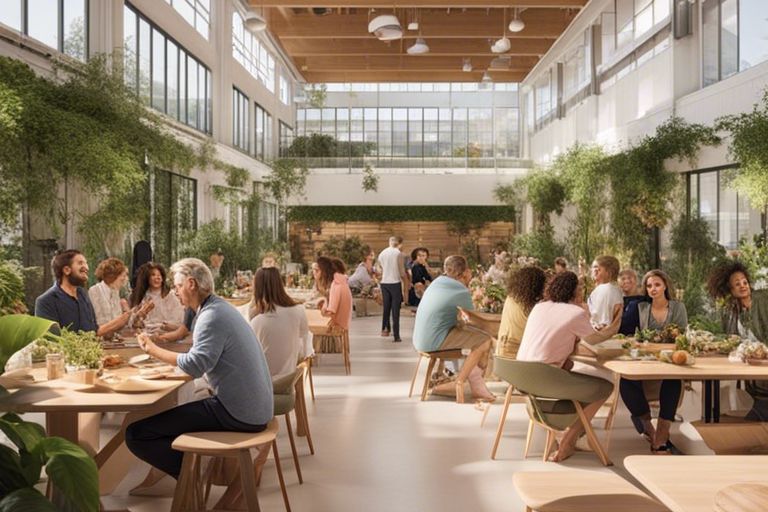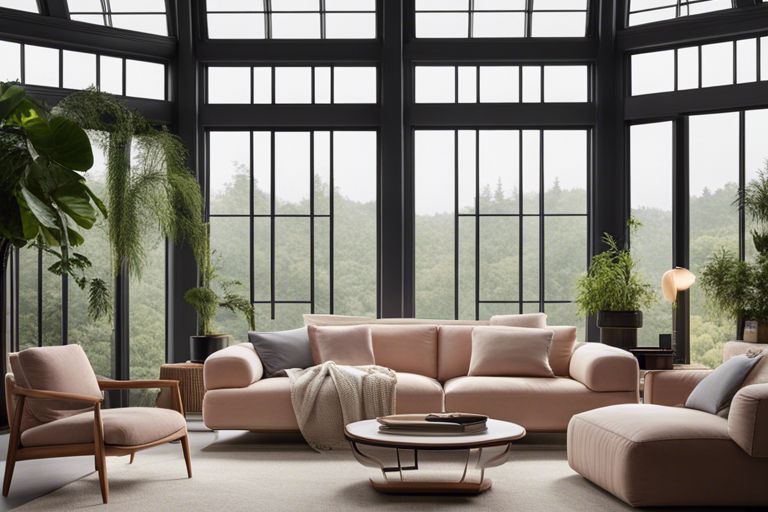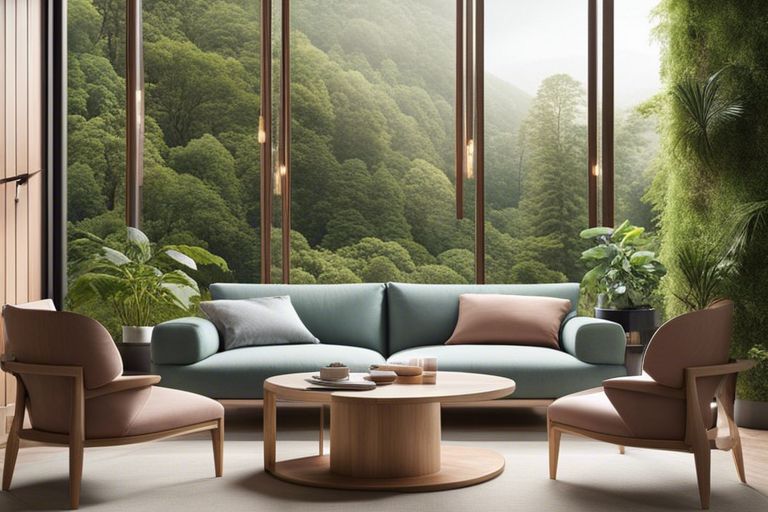Many communities can benefit from implementing biophilic design principles in their urban planning. By incorporating natural elements like green spaces, natural light, and water features into the built environment, you can create more inviting and sustainable spaces for your community. This design approach has been shown to enhance well-being, promote social interaction, and foster a sense of belonging among residents. Discover how you can use biophilic design to strengthen community engagement in your area.
Key Takeaways:
- Biophilic design can enhance community well-being: Integrating natural elements like plants and natural light in urban spaces can improve mental health and create a sense of connection to nature among residents.
- Biophilic design promotes social interaction: By creating inviting green spaces, such as parks or community gardens, biophilic design encourages people to gather, interact, and strengthen community bonds.
- Biophilic design fosters a sense of stewardship: When residents are surrounded by greenery and natural elements, they are more likely to feel connected to their environment and take pride in maintaining and preserving their community.
Defining Biophilic Design
While discussing how biophilic design can enhance community engagement, it’s necessary to start by defining what biophilic design is and how it can positively impact urban spaces and neighborhoods.
The Concept of Biophilia
Defining biophilia refers to the innate human tendency to connect with nature and other living beings. This concept suggests that humans have a natural affinity for the natural world and that being in nature or even just having elements of nature present can have positive effects on our well-being. Biophilic design aims to incorporate these natural elements into man-made environments to improve human health, productivity, and overall quality of life.
Incorporating Nature into Design
Design approaches in biophilic design can include incorporating natural light, ventilation, greenery, and views of nature into architectural spaces. By integrating elements such as plants, water features, and natural materials like wood and stone, designers can create environments that evoke the same sense of calm and tranquility found in natural settings.
With biophilic design, you can create spaces that not only look visually appealing but also have a positive impact on your mood, productivity, and overall well-being. The incorporation of nature into urban environments can help reduce stress, increase creativity, and foster a greater sense of community among residents.
The Importance of Community Engagement
One crucial aspect of building a vibrant and sustainable community is through community engagement. When residents are actively involved in shaping their neighborhoods, it not only enhances their sense of belonging but also fosters a shared responsibility for the well-being of the community.
Building Stronger Neighborhoods
Importance of community engagement cannot be overstated when it comes to building stronger neighborhoods. By involving residents in decision-making processes, community projects, and events, you create a sense of ownership and pride in the neighborhood. This leads to a more cohesive community where individuals are invested in improving and maintaining the quality of their surroundings.
Fostering Social Connections
Any thriving community is built on social connections among its residents. When community engagement is encouraged, it provides opportunities for individuals to come together, interact, and form meaningful relationships. These social connections not only create a support system within the community but also lead to a more inclusive and cohesive neighborhood.
Another important benefit of fostering social connections through community engagement is the creation of a network of resources and talents. When individuals with diverse skills and backgrounds come together, they can collaborate on various initiatives, share knowledge, and support each other in times of need, strengthening the community as a whole.
How Biophilic Design Enhances Community Engagement
Creating Inviting Public Spaces
Biophilic design elements such as green parks, natural lighting, and water features can significantly enhance public spaces, making them more inviting and attractive to community members. Imagine a park with lush greenery, comfortable seating areas, and the sound of a nearby stream – these natural elements can create a sense of tranquility and relaxation for you and your neighbors, encouraging you to spend more time outdoors and engage with your community.
Encouraging Social Interaction
An inclusive and welcoming environment created by biophilic design can foster social interactions among community members. Imagine a neighborhood square with outdoor seating, where you can sit and chat with your neighbors, or a community garden where you can work together with others to grow vegetables. These shared spaces designed with nature in mind can facilitate connections and relationships among community members, leading to a stronger sense of belonging.
Social connections and relationships are crucial for building a sense of community and fostering a supportive environment. With biophilic design principles incorporated into shared spaces like community centers or gathering areas, community engagement can be enhanced. Imagine a community hall with large windows overlooking a garden, where you can attend events and activities that bring people together. These spaces not only encourage social interactions but also provide opportunities to collaborate, learn from one another, and celebrate shared experiences.
Promoting a Sense of Community
Encouraging active participation from community members in the design and maintenance of shared green spaces can foster a sense of ownership and pride. When you are involved in planting trees, tending to a community garden, or participating in outdoor events, you develop a deeper connection to your surroundings and your neighbors. Public spaces designed with biophilic principles in mind can become hubs for community activities, where you and your neighbors can come together to socialize, learn, and celebrate, ultimately promoting a stronger sense of community.
Biophilic Design Elements for Community Engagement
Once again, research has shown the significance of incorporating biophilic design elements in urban planning to enhance community engagement. According to a study on Biophilic smart cities: the role of nature and technology in…, the integration of nature and technology plays a crucial role in creating sustainable and community-friendly environments.
Natural Light and Ventilation
Community engagement can be greatly enhanced through the incorporation of natural light and ventilation in urban spaces. By allowing sunlight to filter in and fresh air to circulate, you are creating a more inviting and pleasant atmosphere for residents to gather and interact. These elements not only improve the physical environment but also contribute to the mental well-being of individuals, fostering a stronger sense of community.
Green Walls and Roofs
With the installation of green walls and roofs in public spaces, you can transform drab cityscapes into vibrant and eco-friendly areas that promote community engagement. These living installations not only add aesthetic value but also serve as natural air purifiers, improving the overall air quality of the surroundings. By incorporating green walls and roofs, your community can enjoy a closer connection to nature, encouraging residents to spend more time outdoors and engage with their environment.
The integration of green walls and roofs in urban design can also help in mitigating the heat island effect in densely populated areas, offering cooler microclimates that make outdoor spaces more comfortable and enjoyable for social gatherings and events.
Water Features and Public Art
Green spaces that feature water elements and public art installations can significantly enhance community engagement by providing serene and visually appealing environments. Water features such as fountains or ponds create a sense of calm and relaxation, attracting people to gather and socialize in these areas. Public art, on the other hand, adds cultural value to the community, sparking interest and conversation among residents and visitors alike.
Biophilic
Biophilic design principles emphasize the importance of incorporating natural elements into urban spaces to create environments that are not only sustainable but also conducive to community engagement. By integrating biophilic elements such as natural light, greenery, water features, and public art, you can foster a stronger sense of connection between individuals and their surroundings, ultimately enhancing community well-being and cohesion.

Real-World Examples of Biophilic Design
Successful Community Projects
Unlike traditional urban design elements, biophilic design principles have successfully transformed various community spaces, fostering engagement and well-being among residents. One notable success story is the High Line park in New York City, where biophilic design elements such as plantings, natural light, and reclaimed materials have rejuvenated an old railway line into a vibrant green space. This project has not only elevated the community’s quality of life but also sparked economic growth and increased social interactions among neighbors.
Lessons Learned from Implementation
Projects incorporating biophilic design have shed light on valuable lessons for future community engagements. One crucial lesson is that biophilic design should be integrated from the planning stage and involve community input to ensure its effectiveness and relevance. Additionally, monitoring the impact of biophilic elements on factors such as air quality, stress levels, and social cohesion is necessary for continuous improvement and sustained community engagement.
Design integration walks a fine line between maximizing biophilia and avoiding hazards. The symbiosis between nature and human-made structures can be a delicate balance that, if not carefully executed, may hinder rather than enhance community engagement. By incorporating biophilic design elements thoughtfully and strategically, you can create spaces that not only invite connection with nature but also support a sense of belonging and community among residents.
Overcoming Challenges and Limitations
Budget Constraints
Many community projects face budget constraints that can make incorporating biophilic design elements seem daunting. However, there are ways to work around financial limitations. You can start by prioritizing which biophilic features will have the most significant impact and focusing your resources on those aspects. Additionally, exploring cost-effective alternatives such as using local materials or incorporating vegetation that requires minimal maintenance can help make biophilic design more accessible within constrained budgets.
Balancing Aesthetics and Functionality
On the journey to embracing biophilic design in community projects, finding the balance between aesthetics and functionality can be a challenge. Overcoming this requires thoughtful planning and collaboration between designers, architects, and community members. This balance is crucial to ensure that biophilic elements not only enhance the visual appeal of the space but also serve practical purposes, creating environments that are both beautiful and functional for the community.
Conclusion
Presently, you have learned how biophilic design can greatly enhance community engagement by creating spaces that foster a deep connection with nature. By incorporating elements like natural light, vegetation, and natural materials into urban environments, you can create more inviting and sustainable spaces that encourage social interaction and overall well-being. Biophilic design not only benefits individuals by improving their quality of life, but it also strengthens community ties and promotes a sense of belonging.
Through the implementation of biophilic design principles in community spaces, you can contribute to a more sustainable and harmonious future for all. By prioritizing the well-being of both people and the environment, you can create spaces that not only look beautiful but also nurture a sense of community and connection with nature. Embracing biophilic design in your community initiatives can truly transform the way people interact with their surroundings and with each other, fostering a more vibrant and engaged community overall.
FAQ
Q: What is biophilic design?
A: Biophilic design is an innovative approach that incorporates elements of nature into the built environment to create a more harmonious and human-centered space. This design principle aims to reconnect people with nature, leading to improved well-being and productivity.
Q: How does biophilic design improve community engagement?
A: Biophilic design has been shown to improve community engagement by creating spaces that are visually appealing, calming, and welcoming. When people are surrounded by nature-inspired elements, such as natural light, greenery, and natural materials, they are more likely to feel connected to their environment and to one another. This sense of connection can foster community cohesion and collaboration.
What are some examples of biophilic design elements that can enhance community engagement?
A: Some examples of biophilic design elements that can enhance community engagement include indoor plants, green walls, natural water features, and ample natural light. Community spaces designed with biophilic principles in mind, such as parks, plazas, and gathering areas, can also encourage social interaction and a sense of belonging among residents. By incorporating these elements, communities can create environments that promote well-being, creativity, and a stronger sense of community.



